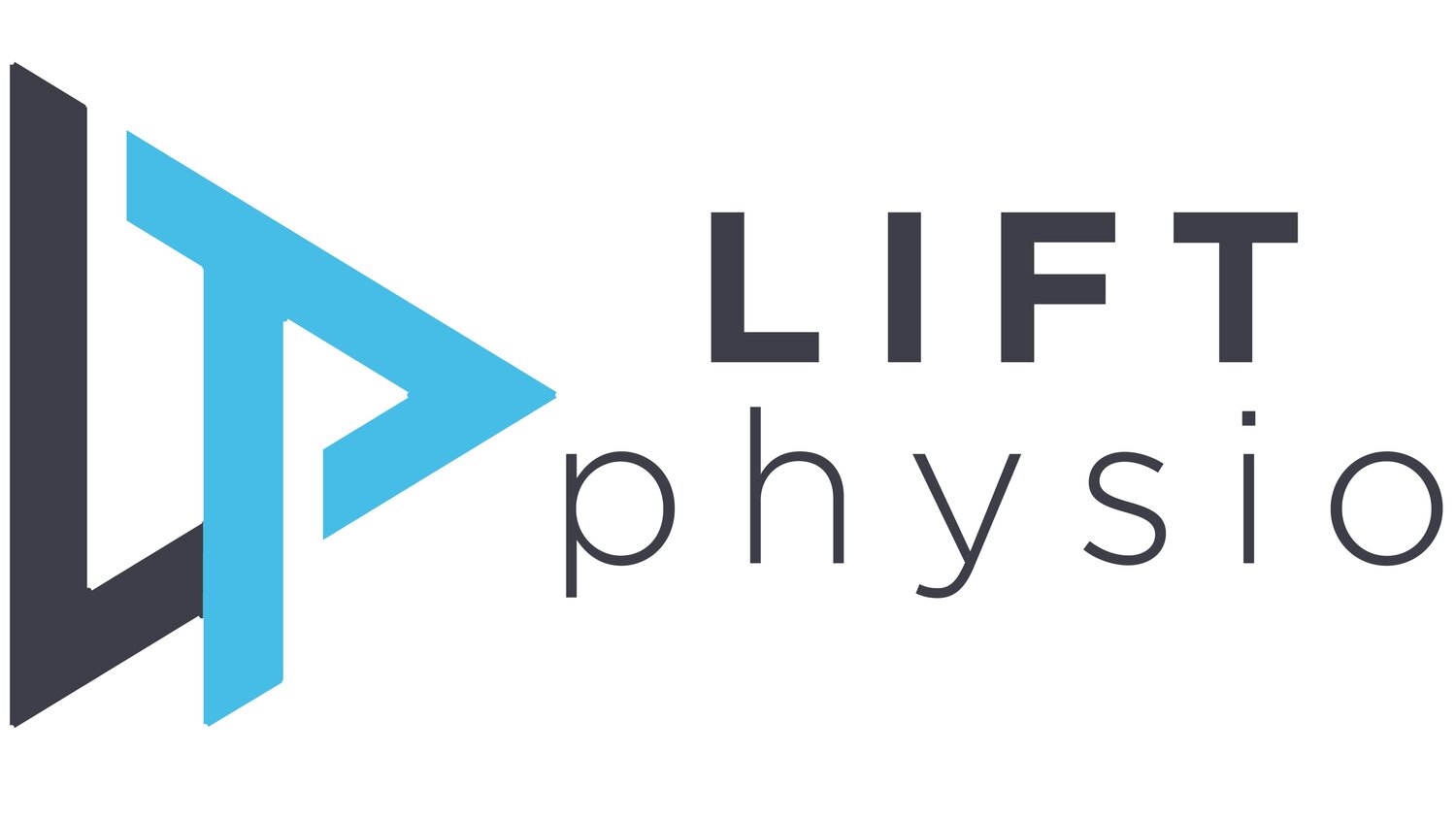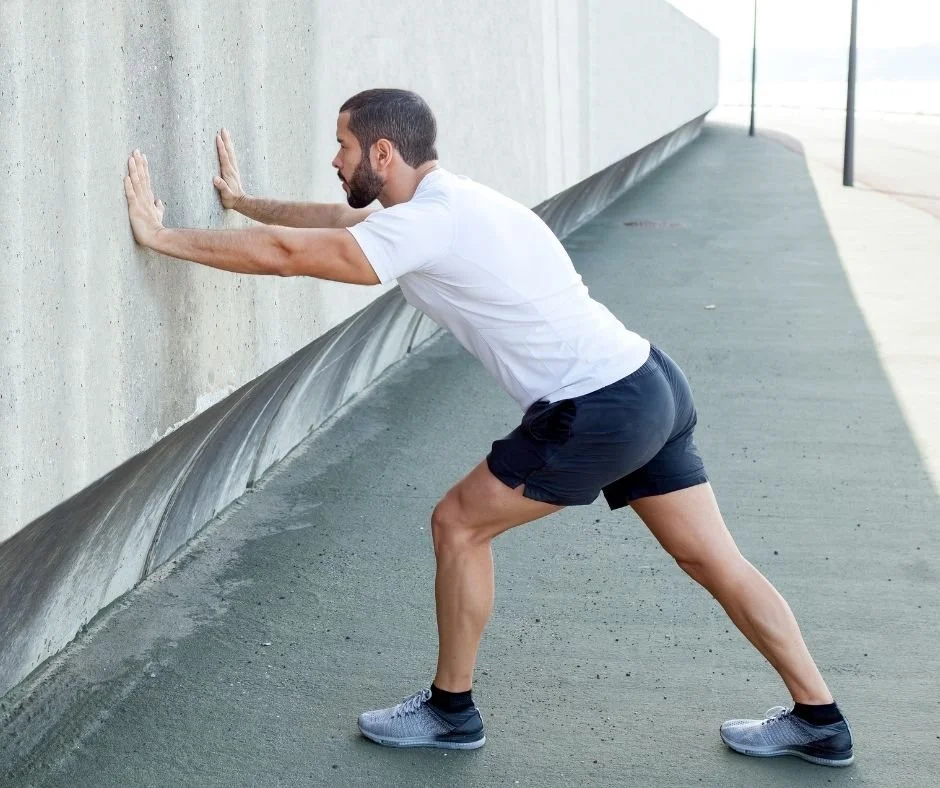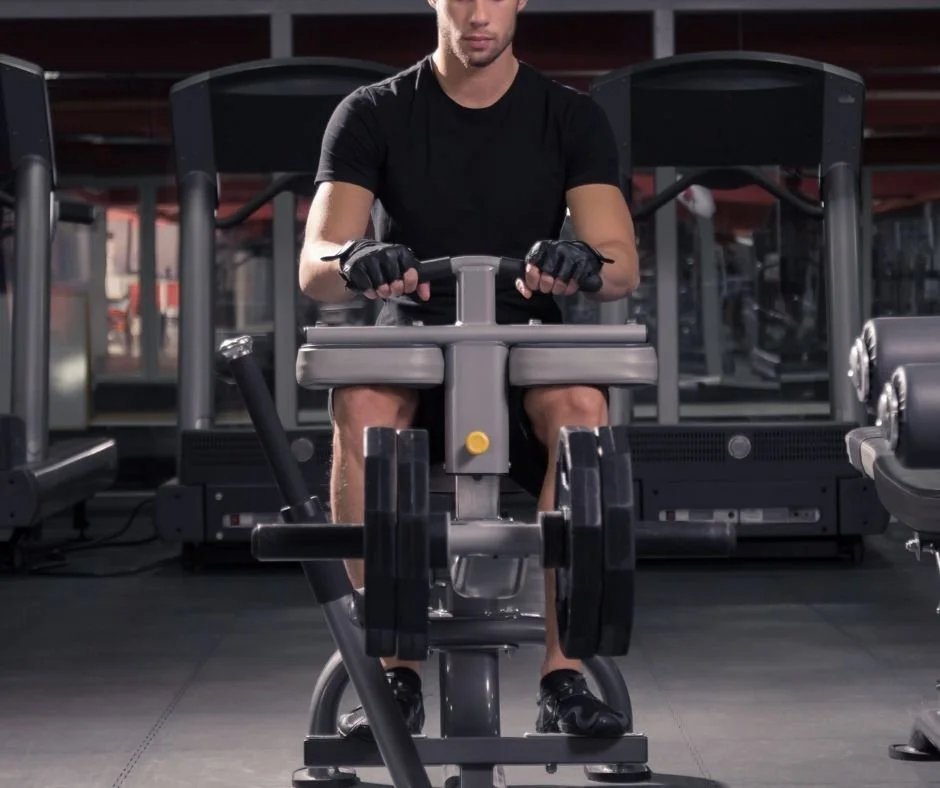Exercises for Sore Knees From Running
Top exercises for sore knees from running (fix runner’s knee pain fast).
If you are a long distance runner, then chances are that you have experienced knee pain from running at some point. There can be lots of different causes for knee pain after running – some conditions like “runner’s knee”, patellofemoral pain, ITB Friction Syndrome, or meniscal tears might sound familiar to you.
Finding the right exercises for you can really help to alleviate the symptoms of knee pain after running.
Here are our favourite exercises for knee pain after running, to help reduce your knee pain. And at the end of this video we'll also tell you what to do to help fix your knee pain for good, so that you can continue to run without that painful knee problem.
1 - Hamstring stretch
Hamstring stretches are an important part of any fitness routine, whether you're a professional athlete or just starting to work out. But if you're not used to stretching, it can be tough to know how to do it properly. That's where a stretch band comes in. A stretch band is a great way to get a deep, effective stretch in your hamstrings. And best of all, it's easy to do at home with just a few simple steps.
To start, lie down on your back with your legs straight. Place the center of the stretch band around the arch of your right foot, and hold each end of the band in your hands. Gently pull on the band until you feel a stretch in your hamstrings.
2 - foam roll ITB and ball release TFL
Anyone who's ever run more than a few miles knows that the IT band can quickly become tight and inflamed. The iliotibial band (ITB) is a long strip of connective tissue that runs along the outside of the thigh, from the hip to the knee. When it becomes tight or irritated, it can cause friction and pain, making running a painful ordeal. Foam rolling is a great way to release tension in the ITB, as well as the surrounding muscles. Start by positioning a foam roller parallel to your leg, just above your knee. Slowly roll up and down the length of your thigh, applying as much pressure as you can tolerate. To target the TFL (tensor fasciae latae)
3 - Quad and hip flexor stretch
Most people spend the majority of their day sitting, which can lead to tightness in the hips and quads. Stretching these muscles is essential for maintaining mobility and preventing pain. Here are two stretches that everyone should make a part of their daily routine.
To stretch your quads, start by standing up straight. Bend one knee and reach behind you to grab your ankle. Gently pull your heel towards your buttock, keeping your other leg straight. You should feel a stretch along the front of your thigh. Hold the stretch for 30 seconds before repeating on the other side.
To stretch your hip flexors, start in a low lunge position with your left leg forward and right leg back. Make sure that your left
4 - Calf stretch
The calf muscle is located at the back of the lower leg, just below the knee. The calf muscle aids in plantar flexion, which is the movement of the foot downward. The calf muscle also helps to stabilise the ankle joint. For these reasons, it is important to stretch the calf muscle regularly to prevent injury and improve flexibility.
To stretch the calf muscle, stand with your feet hip-width apart and your hands on a wall or a piece of furniture for support. Place your right foot behind you, keeping your heel on the ground and your toes pointing up. Bend your left leg, keeping your knee straight as you lean forward into the stretch. You should feel a stretch in your right calf muscle. Hold the stretch for
So…
The first thing we want to do is to reduce you knee pain symptoms - and a great way to do this is by stretching or rolling out all of the muscles that surround your knee. This could be a hamstring stretch, rolling out your ITB and TFL muscle with a foam roller or firm ball, a quad and hip flexor stretch or stretching out your claves.
Now that we have reduced your knee pain symptoms, how do we go about fixing this problem for good, as that you can continue to run without knee pain in the future.
…
Well for this we often have to look at what what is happening both above and below the knee.
If you've been running for any length of time, you've probably heard about how important glute muscle strength is - and while just like Happy Gilmore, many runners believe that it's all in the hips.... Whilst glute muscle strength and control IS a really important factor - it may not be the MOST important factor in long distance running - I'll show you why in a minute, but first, here is an exercise to strengthen your glute med muscle, because it is still really important in the way that you transfer the forces through your body when you run.
Knee strengthening exercises for knee injuries:
1 - Banded crab walk
The banded crab walk is a great way to help relieve knee pain. To do the exercise, start in a low squat position with your feet hip-width apart and your hands on the ground in front of you. Place a resistance band around your knees, then slowly walk forward while maintaining the squat position. As you walk, be sure to keep your knees in line with your toes and resist the urge to let them collapse inward. You should feel a stretch in your hips and glutes as you perform the exercise. Do 10 repetitions on each leg. This exercise can help to improve your mobility and range of motion while also strengthening the muscles around your knee joint. If you have any pain or discomfort during the exercise, be sure to stop and
So like I was saying, we definitely want to have nice, strong glute muscles for running, but it might not be the most important muscle for running - and here's why - the muscle that works the hardest is actually one of the muscles in your calves called your soleus!
The best way to strengthen your Soleus is through a bent knee calf raise
1 - Seated calf raise
The seated calf raise is a great exercise for those who suffer from knee pain. The reason this exercise is so effective is because it strengthens the muscles around the knee joint, which helps to stabilize the joint and take pressure off of the ligaments. To perform the seated calf raise, simply sit in a chair with your feet flat on the ground and your knees bent to 90 degrees. Slowly raise your heels until you are standing on your toes, and then lower them back down to the starting position. You can perform this exercise with or without weights, but if you have knee pain, it is best to start without any added weight. As you get stronger, you can gradually add weight to increase the intensity of the exercise.
How can I make my knees less sore after running?
if you are experiencing runner's knee or other knee pain from running, then try some of the runner's knee exercises to decrease knee pain and prevent runner's knee. If pain still persists, then consult with your physiotherapist for some tailored help.
Is it OK to run with sore knees?
If you've ever gone for a run with sore knees, you may have wonders whether or not it's actually OK to do so. The answer isn't always clear cut, as it depends on the cause of the soreness. If the problem is only mild and well managed, then running can actually help to speed up the healing process by increasing blood flow to the area. However, if the pain is caused by a more serious condition, that requires load reduction or modification, then running may only exacerbate the problem. It is always best to consult with a physiotherapist before starting any new exercise routine. They will be able to assess your individual situation and advise you on whether running is appropriate for you.
Why do my knees hurt after I run?
There can be many reasons why your knees might start to hurt after running. It is often due to overuse or repetitive movements, which can lead to conditions such as runner's knee, ITB syndrome, shin splints or patellofemoral pain syndrome. However, it could also be a sign of something else, such as a meniscus tear or arthritis. If you are experiencing knee pain after running, it is best to consult with a physiotherapist so that they can assess the problem and advise you on the best course of treatment.






